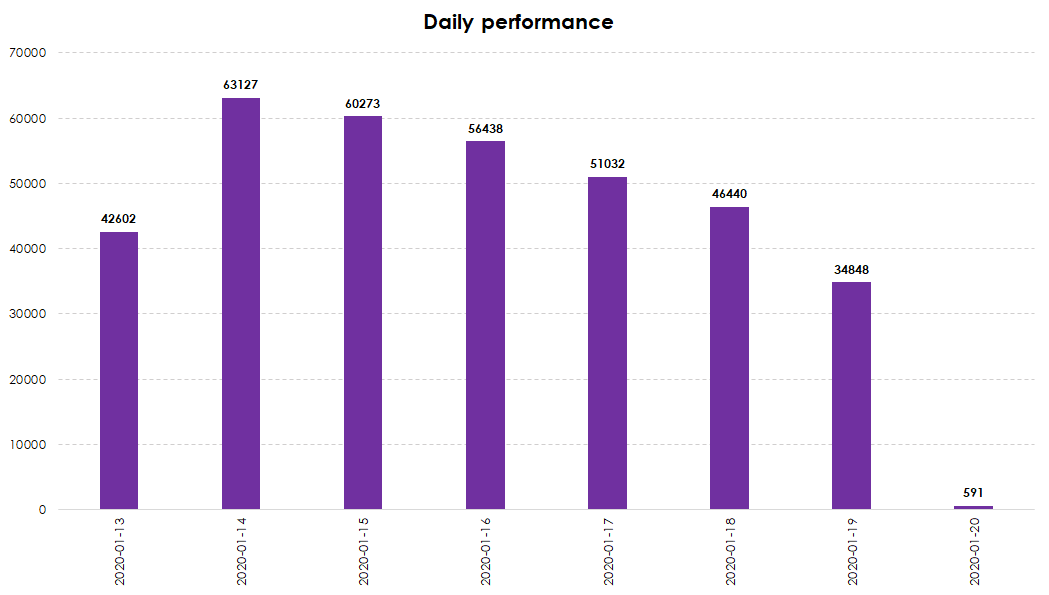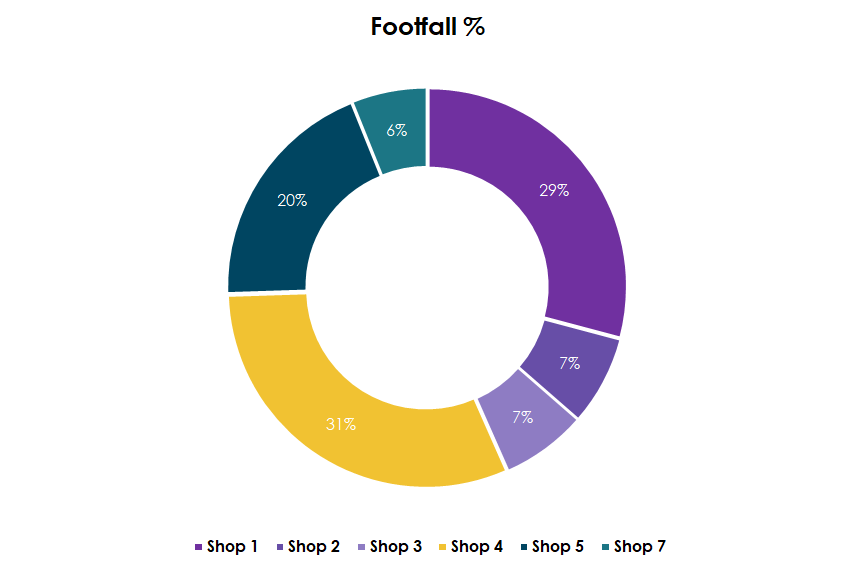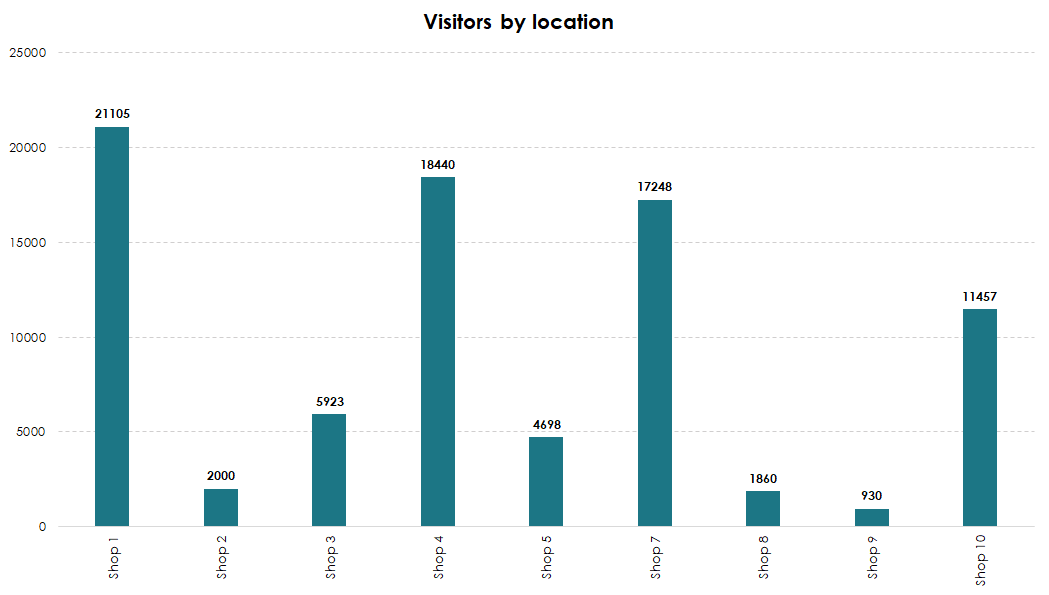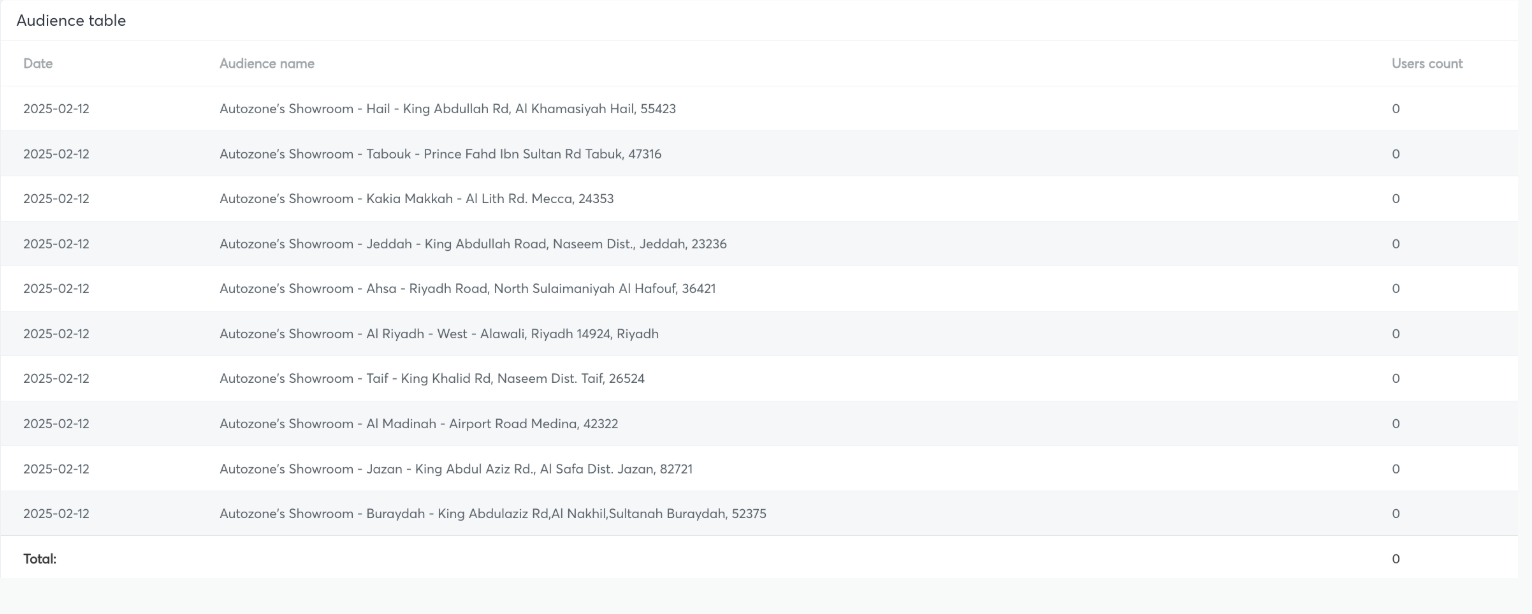Footfall
You may think that driving people to your website is the only use for online advertising – but did you know that if you have a physical shop, Eskimi Ads can be key in bringing more customers through your business’ front door?
Footfall is a marketing term used by retailers for describing the number of customers that enter their stores.
Footfall attribution is a method used to correlate digital marketing campaign impressions to actual store visits.
The primary goal is to Initiate offline user activity to your physical store/location.
Footfall table example in Eskimi DSP report(Please note that the audience table is called Audiences and the footfall table is called Audience table, below you can see an example of a footfall table)
Technology
Target users in different places. You can choose a wide range of targeting opportunities:
-
Country-wise - you can target the whole country. However, this may reduce the likelihood for people to visit your store if it in another part of the country.
-
Regional wise - this targeting would allow you to still reach a rather big amount of users, but it should bring better accuracy than country-wise targeting.
-
Radius targeting - To maximize the footfall results target users who are frequently next to your physical shop. Radius can differ depending on your goal, country, amount of shops, and other factors.
-
Other targeting opportunities - to reach good results the essential thing is to target app traffic. So you can use previous geofence audiences, impressions audiences from previous campaigns, interest audience and etc. Just don’t forget to enable only apps.
Footfall technology is based on various data segments. From which the primary is device IDs which is analyzed and compared from the users who have seen the ad and appeared in your physical store/location. Also, the solution takes into consideration real-time GPS location data. Meaning, that users are captured and analyzed in real-time.
Limitations - the majority of users will be reached on apps
.Results
Eskimi DSP not only allows footfall measurement but can your brand a better understand on what kind of audience was reached; give audience insights for the collected audience; go deeper for a better understanding of the footfall results.


|
Shop Name |
Totall footfall users |
|
Shop 1 |
6,607 |
|
Shop 2 |
1,650 |
|
Shop 3 |
579 |
|
Shop 4 |
97,053 |
|
Shop 5 |
4,399 |
|
Shop 6 |
200 |
|
Shop 7 |
386 |
|
Shop 8 |
231 |
|
Shop Name |
Totall Footfall Users |
Footfall Rate %* |
|
All Shops |
1,354,556 |
1.4% |
*Footfall rate is counted: users visited the shop / Total Reach

|
From Where Users Came |
Footfall Users |
Footfall Rate % |
|---|---|---|
|
Region 1 |
44,555 |
1.21% |
|
Region 2 |
21,334 |
0.91% |
|
Region 3 |
10,341 |
0.56% |
|
Region 4 |
9,443 |
0.10% |
|
From Where Users Came |
The Most Visited Shop |
|---|---|
|
Region 1 |
Shop 5 |
|
Region 2 |
Shop 1 |
|
Region 3 |
Shop 2 |
|
Region 4 |
Shop 4 |
These reports work as an example. Their depth relies on campaign set-up and segmentation. They are not automatically generated by our dashboard, while they are done by our internal reporting team.
Media Planning
Budget: We strongly recommend to start from 10 000$. As with this budget, the client would receive the full package of footfall possibilities.
Audience Collection: Plan at least 2-3 days before the campaign launch for audience collection.
Goal: Clearly understand the client's goals and what they want to measure. What is their success rate. Also, will they track anything on their side.
Reporting: Inform the client that it will take up to 3 working days to prepare the report.
- Displays cross-matches between the targeted audience and the footfall audience;
- Displays the sum, not an overlap;
- User can be cross-matched at any point in time after the ad is seen;
- Footfall reach show users in sum not unique users;
- The user will be calculated continuously every time he/she visits the location after the seeing the ad;

